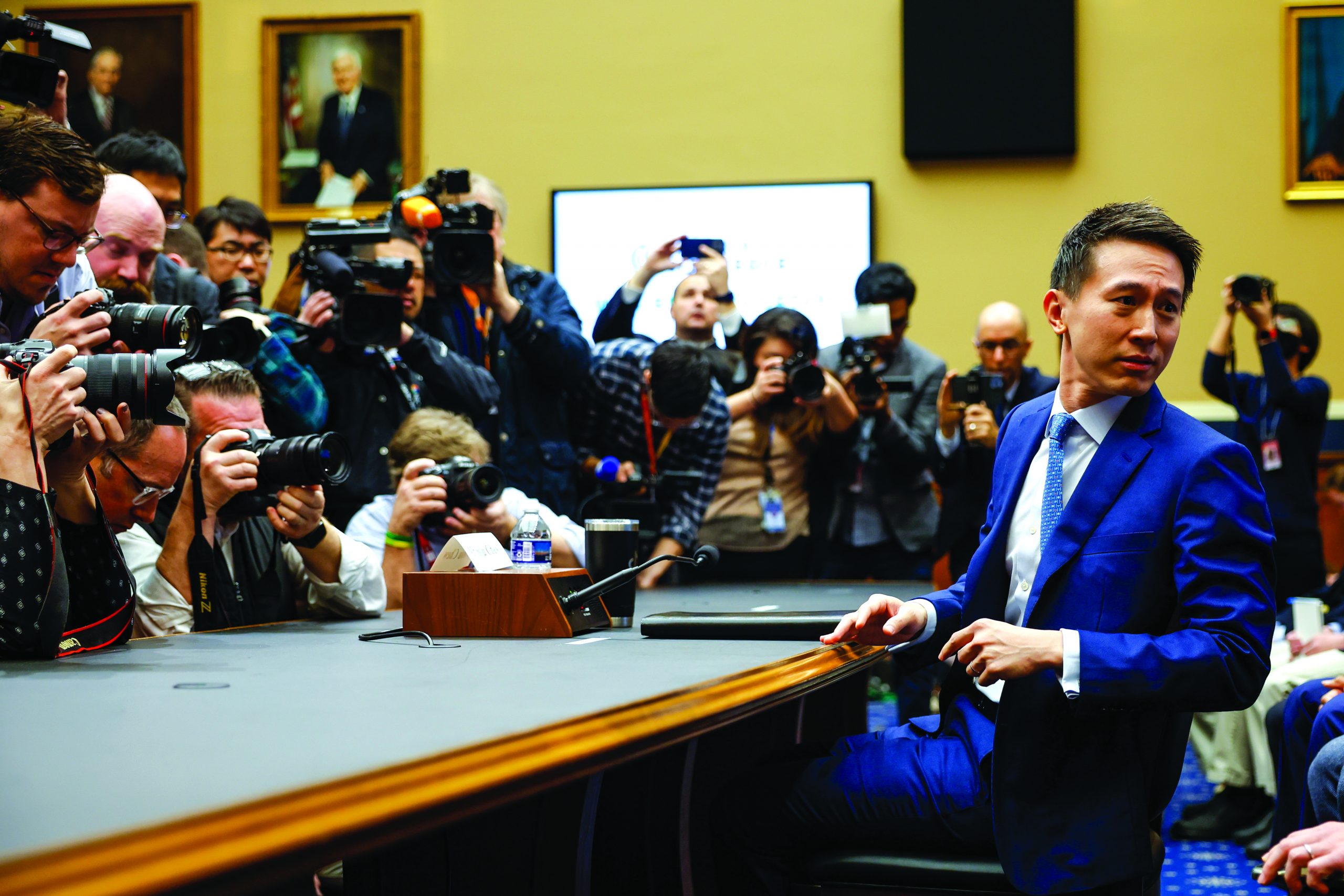Modern Monetary Monopoly
The media plays along while the Federal Reserve USES its power to benefit the rich at the expense of average citizens.
The Federal Reserve dictates to the markets and the economy at its whim, but not many Americans understand its monetary game.
Since 1977, the Fed has had a dual mandate to manage prices (inflation) and maximize employment. To reach those goals, the Fed engages in “open market operations.”
These operations include hiking and cutting the Fed funds interest rate, a figure that affects the credit of every citizen and business in America. The bank can also provide or tighten liquidity to the financial system by buying or selling assets that include U.S. Treasury bonds and mortgage-backed securities. It can set capital reserve requirements on lending institutions.
This isn’t the full story behind the Fed. It’s just the elevator pitch. That pitch, however, is foreign to most Americans.
Twenty-one percent of Americans admit they “know nothing at all about the responsibilities of the Federal Reserve,” according to an April 2022 poll by Axios/Ipsos. Only 7% say they “know a lot about the Fed’s responsibilities.”
This shocking poll is reason for concern.
With the central bank signaling intent to raise interest rates above its current 3.0% to 3.25% range, the central bank’s decisions will have a greater immediate financial impact than those of any politician running for office this fall or any presidential candidate in 2024. These actions will change the labor market, credit access, housing prices and much more.
So, why aren’t more Americans paying attention?
Managing the economy
On Sept. 21, the Federal Reserve hiked its Fed funds rate by 75 basis points. This was the third consecutive meeting where the central bank increased interest rates by that amount, bringing its official rate to 3.0% for the first time since 2008. Markets expect the Fed will hike rates by 75 basis points again during its November meeting.
The markets also have priced in a higher likelihood that the Fed will raise rates to at least 4.25% by 2023 to contain and, hopefully, reduce inflation.
But all this language—basis points, funds rate, liquidity—strikes most people as wonky and unintelligible. The financial news that’s generally available is edited for bond traders, not blue-collar workers.
Could this tilt be why only 7% of Americans know how the Fed really works?
Perhaps. But help is on the way in a new book called The Lords of Easy Money. Author Christopher Leonard offers a simple but deep dive into the role the Federal Reserve has played for decades in America’s economy.
(See Monopoly: By the Rules, below).
Leonard says financial media haven’t provided adequate insight into what the Fed’s decisions mean for the average citizen.
“For the financial press, there is this guiding idea that you cover the Fed for the bond markets or for the traders,” Leonard said in an interview with Luckbox. “You write how [Fed Chair Jerome] Powell signals large-scale asset purchases to produce more market liquidity.”
That jargon-laden coverage leaves the general public in the dark. “Every time someone hears about the Fed, it’s boring,” Leonard continued. “It doesn’t seem applicable to their lives. If they’re not trying to make a move in the bond market, they don’t care.”
If the Fed increased the funds’ rate from 0% in early 2022 to more than 4% by December, it would have far-reaching consequences for the economy. The media should report how people are affected.
“The public does want to understand the critical role the Fed plays in both stoking inflation and then fighting inflation,” Leonard said, “or how the Fed dramatically increased the price tag that must be paid to fight inflation.”
The right way of explaining all that seems clear, he maintained. “More media outlets and newspapers should start [covering] the Fed in plain English,” he said. “The focus is on the way it impacts everyday people and our economy, as opposed to the idea of ‘how can I make a buck off this news?’”
Financial news delivered in plain English would shock the public, Leonard insisted.
People would learn higher interest rates reduce access to credit, constrain consumer spending and discourage investment in businesses. Rate hikes drive up the interest on mortgages and drive down house prices. The Fed’s tightening can threaten the labor market, potentially costing individuals their current jobs or depriving them of new opportunities.
Yet, just 8% of respondents correctly recognized that the Fed’s mandate includes “maximizing employment,” according to the Axios/Ipsos poll.
Most Americans aren’t aware of the Fed’s role in the fight against inflation, either. While Congress passed the Inflation Reduction Act this year, monetary policy based on higher interest rates will do much more to lower prices. The poll showed only 34% knew the Fed’s role includes managing inflation or stabilizing prices.
Then, there’s the Fed’s influence in the housing market.
Paying the price
Sixty-four percent of Americans own real estate, according to the research firm The Zebra. That means roughly 35% of Americans do not own their own houses.
Millennials, defined as those born between 1981 and 1996, are reaching the age when past generations were buying homes. But insufficient income and high house prices are forcing many of them to keep renting.
Maybe the policies of the Federal Reserve are also contributing to the generation’s financial malaise.
“Nearly a third incorrectly indicated that the Federal Reserve controls mortgage rates, while a plurality (45%) say they don’t know,” the Axios/Ipsos poll indicated.
While the Fed doesn’t control mortgage rates, it directly influences the housing market through its Fed funds rate and its ownership of Treasury bonds and mortgage-backed securities. Buying bonds helps the Fed constrain yields on these assets and provides liquidity to the financial markets.
Mortgage-backed securities comprise a bundle of home loans typically originated by companies like Fannie Mae, Freddie Mac, or Ginnie Mae. The real estate backs the loans. The buyer of these assets receives a payment each time homeowners pay their mortgage and interest.
In 2022, the Fed owned about 33% of all mortgage-backed securities (MBS)—a portfolio valued at $2.71 trillion. Studying the data leads one to the conclusion that it’s difficult to argue there isn’t a direct relationship between the Fed holdings of MBS and housing prices in the last 14 years.
Fed-fueled housing costs
In 2020, The New York Times reporter Jeanna Smaller penned an article with this headline: Home Prices Are Roaring. Is That the Fed’s Problem? She noted that experts worried that “the central bank’s big bond purchases could be helping to inflate … the housing boom.”
Housing prices, measured by the Case-Schiller Index, surged by 30% between March 2020 and December 2021. That was the largest jump since the run-up to the 2008 financial crisis.
In August 2022, housing prices added another 8.8% year-to-date, according to Fitch Ratings.
While demand indeed outstripped supply in the post-COVID era, the Fed’s commitment to lower interest rates and large balance sheets helped fuel a run on available units. Meanwhile, the Fed also engaged in one of the more questionable decisions of this inflationary cycle.
In 2021, while the central bank warned that inflation was “transitory,” it still aggressively purchased billions in mortgage-backed securities. That helped keep interest rates low and offered cheap liquidity to the market. But by failing to raise the Fed funds rate earlier and suppressing market rates through bond purchases, the era of easy money helped drive home prices up significantly.
While the Fed says it plans to reduce its balance sheet over the next 18 months, it has largely missed its targets so far.
Qui bono?
Who benefits from the Fed’s policies of cheap money and housing inequality? Leonard devoted an entire chapter of his book to the subject.
“First of all, it’s these little entities you’ve never heard of: Blackstone and Goldman Sachs and Wells Fargo and JPMorgan,” Leonard wrote jokingly. “Then there’s Larry Fink’s BlackRock, who was on the phone with Jerome Powell like eight times a day during the crisis. Carlyle Group and other private equity firms benefit from these policies, time and time again.”
In the book, Leonard offered an example of the Fed’s accommodations during the Repo Meltdown in September 2019 and described how the Fed bails out institutional traders.
“The Fed was doing everything to normalize the market, another symptom of just how distorted they’ve made everything,” he wrote. At the time, those hedge funds bet big on the Treasury market with forward contracts. “Those folks were about to lose their shirts. But they didn’t. The Fed stepped in to calm the repo market, and pumped cash into the banking system.”
Some would argue the Fed has helped some Americans by keeping rates low and enabling people to make money in the housing market in the last few years. But anyone who bought a house in the last 12 months may face falling home valuations if the economy rolls over soon.
And non-homeowners? They receive no reprieve from the Fed’s monetary policies.
Instead, many non-homeowners may pay higher rents. With less supply on the market (artificially created by a run on the assets and now more competition from investment management firms like BlackRock), rent may only climb higher—as it has in 2022.
Perhaps the less the citizenry knows, the more the investment firms benefit, according to Leonard. He’s convinced that the only hope for most people is that the media will openly discuss the impact of the Fed’s policies and shine a light on practices that could improve the situation.
Companies like BlackRock and Blackstone don’t just win—they’re also shielded from failure, he maintained.
“Not only did the Fed save them from a really bad bet,” Leonard said, “but when the Fed did that, they piled in even further so then the price tag of saving them will be even higher next time.”
For Leonard, here’s the bottom line: “What the central bank is doing absolutely benefits the richest of the rich and the most sophisticated financial players.”

Monopoly: By the Rules
The Federal Reserve uses its monopoly on the underlying cost of capital in the United States to distort financial markets and promote economic inequality. To understand how that’s happening, consider Hasbro’s popular Monopoly board game.
In 1903, Elizabeth J. Magie Phillips, a feminist who hated the monopolies of the gilded age, created The Landlord’s Game—the precursor to Monopoly. That was a decade before the founding of the Fed.
In the version of Monopoly that became popular during the Great Depression, players start the game with $1,500 and earn $200 every time they pass “Go.” Along the way, they can purchase properties, collect rent, build houses and hotels, and pay taxes and fines to the bank.
The game ends when other players go bankrupt. Monopoly is essentially a game of “liquidity.”
House Rules
One of the primary complaints about Monopoly is that it takes too long to complete a game. It should take an hour but usually lasts much longer. That’s because players often engage in “house rules” that inject too much cash back into the game.
A popular house rule allows players to pay taxes and fines to the center of the board instead of back to the bank (as the rules dictate). Then, players who land on the “Free Parking” square can collect the money.
That’s the problem. The written rules of Monopoly don’t say anyone should collect money when they land on Free Parking. The landing space offers no gains or losses. It’s a free place to park your piece.
But the popular house rule allows players to collect hundreds or thousands of dollars, granting them more capital to purchase properties or avoid bankruptcy. The distortion of Monopoly’s integrity with these capital injections lengthens the game.
A 2014 survey by Hasbro, the maker of the game, found 68% of respondents openly admit to having never read the rules in their entirety. In addition, 49% have made up their own rules. But these numbers still reflect a populace more knowledgeable about Monopoly than about the inner workings of the Federal Reserve.
Print More Money
The Federal Reserve’s continued quantitative easing over the last 13 years has distorted business cycles, fueled asset bubbles and prevented certain Americans from owning homes and other assets.
A popular meme on U.S. economic inequality—driven by Fed policy—relates to the popular board game: “Imagine playing Monopoly and never buying anything that could produce more money—just collecting $200 for passing go,” it reads. “This is how most people live their lives.”
Meanwhile, the game’s central bank can never run out of money.
The bank of Monopoly starts with $20,580 and can always create more money.
The rules state: “The Bank never ‘goes broke.’ If the Bank runs out of money, the Banker may issue as much as may be needed by writing on any ordinary paper.”
In simple terms, the players don’t follow the rules—and end up lengthening the game’s boom and bust nature to their own detriment.
Instead, they add new liquidity… and keep the game going.
Likewise, the Federal Reserve’s commitment to such easing has extended business cycles and kept the wealth inequality game humming since 2009. Now, we’ll find out what happens when interest rates rise, unemployment increases and someone decides to flip over the board.
Garrett Baldwin, a commodity and trade economist, serves as Luckbox editor-at-large. He actively trades value and momentum stocks and wagers on sports and prediction markets.






















